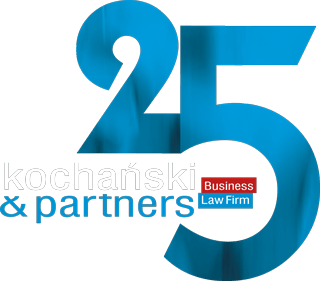You don’t have to be the patriarch of a family to benefit from the opportunities offered by a family foundation.
Intergenerational business succession is only one of the purposes for which such structures are set up.
The second, and equally important, is to protect the wealth generated and to separate it from the current or private liabilities of the founder.
The third is the possibility of creating a modern holding structure, composed of many companies responsible for the individual parts of the business. This structure is diversified in terms of risk and acts as a kind of command centre where key decisions can be taken.
A family foundation can therefore be compared to a closed-end investment fund to which the founder contributes private assets. Although this is a far-fetched analogy, as the rules governing investment funds are completely separate from those governing family foundations, the common denominator between the two vehicles is undoubtedly that the objective of both a closed-end investment fund and a family foundation is to increase the value of the assets contributed, or at least to prevent such value from decreasing. A foundation also operates similarly to a closed-end investment fund in the distribution to its beneficiaries of the funds generated by the contributed assets (in the case of a closed-end investment fund, the funds are distributed to the fund shareholders).
Nowadays, many companies, not just family businesses, operate successfully in such structures.
Protection from the black sheep: what are the advantages of a family foundation?
The concentration of wealth in a single structure:
- Eliminates the risk of its distribution and fragmentation – the assets of the foundation are exempt from the general rules of inheritance and are therefore not subject to inheritance, but are held by the foundation, which must manage them and preserve their value
- Restricts the ability to sell shares to individuals or entities outside the trust circle
- In the event of the founder’s death, protects the assets from, for example, the founder’s creditors; however, it should be borne in mind that a family foundation is to a certain extent liable for the founder’s liabilities. First, the family foundation is jointly and severally liable with the founder for the founder’s liabilities incurred prior to the establishment of the foundation. Secondly, it is also liable for the maintenance obligations of the founder, insofar as they arose before the establishment of the foundation. If the enforcement of maintenance from the founder’s assets is unsuccessful, the maintenance claimant may pursue enforcement from the assets of the family foundation
- Prevents it from being squandered, e.g. by minors/young adults or other irresponsible family members; the rules for managing the assets contributed to the foundation and for spending the funds it accumulates can be arranged in such a way as to protect the value of the assets as much as possible, allowing them to continue to accumulate
- Reduces the risk of inheritance by those unprepared to manage family wealth, as the foundation’s assets are not subject to the general rules of inheritance law
The essence of a foundation is that its beneficiaries are not its shareholders, nor do they obtain a share in the co-ownership of its assets, but are only entitled to certain payments or other benefits. Furthermore, they cannot dispose of their status or transfer it to another person.
The foundation also protects the beneficiaries from, for example, the claims of their spouses or former partners.
Above all, however, it is a good safeguard in the event, for example, of the founder’s untimely death, as it allows the founder to have a say in the decisions that will be made on his or her behalf, as well as in who will receive funds, when, in what form and under what conditions. Since life is full of unexpected scenarios, it is important to be prepared for a variety of difficulties. One of these is the loss of the founder’s ability to function normally and make decisions due to illness or accident. If the founder contributes assets to the foundation and rules are established for the management of the foundation during the founder’s illness or incapacity, the assets accumulated over the years will be protected. This clearly confirms the fact that the establishment of a family foundation should be considered not only at the end of life, but many decades before.
What are the tax advantages of a family foundation?
Although a family foundation is not a tax optimisation tool, it can bring many tax benefits if you plan your activities well.
This is because foundations are exempt from corporate income tax, which means that they can operate for many years, accumulating and multiplying assets without any tax liability.
As a legal entity, a foundation may carry on business in areas including:
- Joining and participating in Polish and foreign commercial companies, investment funds, cooperatives and similar entities
- Buying and selling securities or derivatives
- Selling assets (provided that they have not been purchased for the sole purpose of resale)
- Leasing and renting
- Granting of loans to affiliated companies/partnerships and beneficiaries of the foundation
It should be noted that if the activities of a family foundation go beyond the scope provided for by the law, the foundation will be taxed at a rate of 25% of the taxable base.
However, in the case of the forms of business activity listed above, the tax burden will only arise at the time of payment of the benefits to the beneficiaries. It is therefore worthwhile to look at some of the situations in which the tax liability arises.
In the case of distributions to the so-called zero group (spouse; children and their children; parents and grandparents; siblings; stepfather, stepmother, stepchild), the following are not payable:
- PIT
- Inheritance and donation tax
- Solidarity surcharge
- Social security and health insurance contributions
It should be noted that if a benefit is granted to a beneficiary in the “zero group”, the family foundation is liable to pay CIT of 15 % of the taxable base.
If benefits are granted to beneficiaries of the so-called “1st group” or “2nd group” (son-in-law, daughter-in-law, parents-in-law, children of siblings, siblings of parents, descendants and spouses of stepchildren, spouses of siblings and siblings of spouses, spouses of siblings of spouses, and spouses of other descendants), the beneficiaries pay 10 % PIT; for other beneficiaries the rate is 15 % PIT.
Note, however, that the family foundation will also pay 15 % CIT on the taxable base for distributions to the other groups.
Before you set up a family foundation
Although the process of setting up a family foundation is technically quite straightforward – we are talking about a few elements that need to be implemented – at the same time, the proper development of the structure itself requires considerably more effort and time.
In fact, a family foundation is clearly not a replicable vehicle or a solution that you can copy and paste and then simply enjoy the benefits.
It must be tailored to the individual’s needs, wealth situation, asset characteristics and related plans.
A good feasibility study is not so much an assessment of the feasibility of such a task, but rather a very thorough analysis of the founder’s objectives in relation to:
- The development of the business and the assets accumulated
- Management methods
- Planned acquisitions
- Changes in the business environment
Such an analysis will make it possible, on the one hand, to adapt the foundation’s articles of association and internal regulations to the founder’s plans and, on the other hand, to guard against various problems and legal or tax consequences.
Any questions?
Contact us




